Special Educational School serves 29 students in grades Prekindergarten-12.
The student:teacher ratio of 7:1 is lower than the Washington state level of 16:1.
Minority enrollment is 62% of the student body (majority Hispanic and Black), which is higher than the Washington state average of 52% (majority Hispanic).
Quick Stats (2025)
- School Type: Special education school
- Grades: Prekindergarten-12
- Enrollment: 29 students
- Student:Teacher Ratio: 7:1
- Minority Enrollment: 62%
- Source: National Center for Education Statistics (NCES), WA Dept. of Education
Top Rankings
Special Educational School ranks among the top 20% of public schools in Washington for:
Category
Attribute
Community Size
Student Attention
School Overview
Special Educational School's student population of 29 students has declined by 81% over five school years.
The teacher population of 4 teachers has stayed relatively flat over five school years.
School Type
Grades Offered
Grades Prekindergarten-12
Total Students
29 students

Gender %
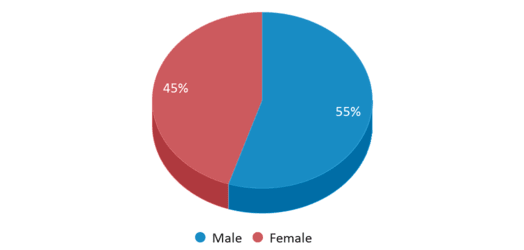
Total Classroom Teachers
4 teachers
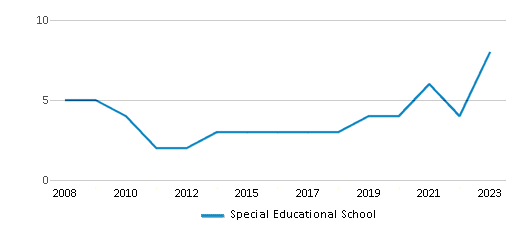
Students by Grade
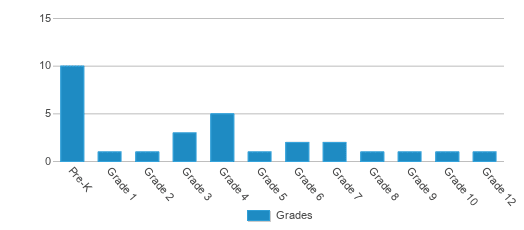
School Rankings
The diversity score of Special Educational School is 0.77, which is more than the diversity score at state average of 0.69. The school's diversity has stayed relatively flat over five school years.
Student : Teacher Ratio
7:1
16:1
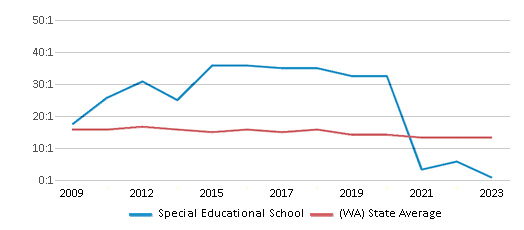
American Indian
3%
1%
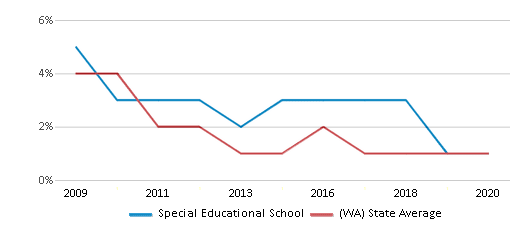
Asian
10%
9%
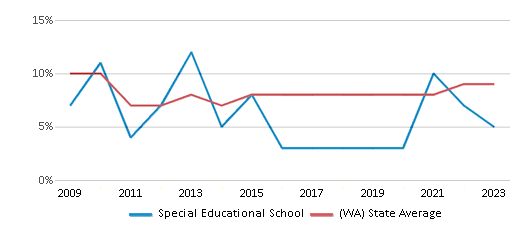
Hispanic
24%
26%
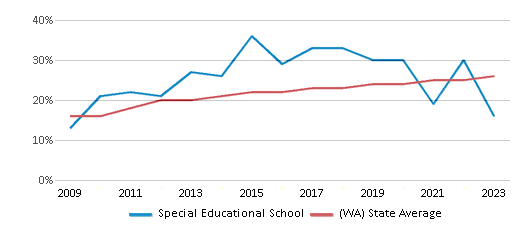
Black
14%
5%
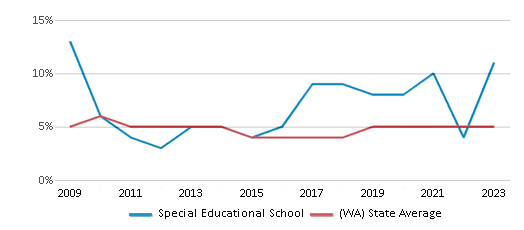
White
38%
48%
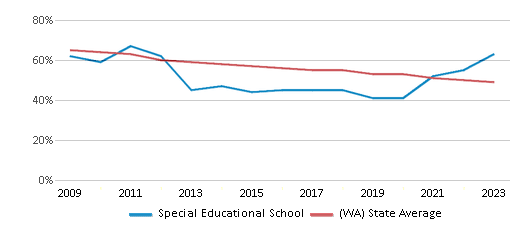
Hawaiian
4%
2%
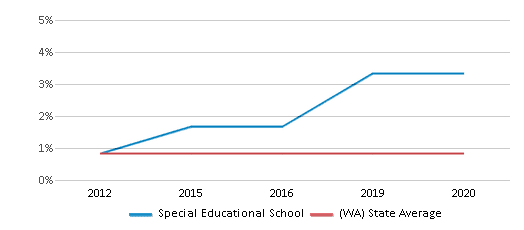
Two or more races
7%
9%

All Ethnic Groups
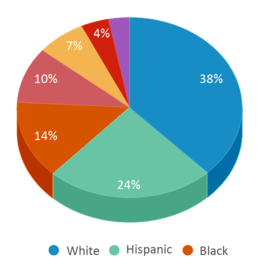
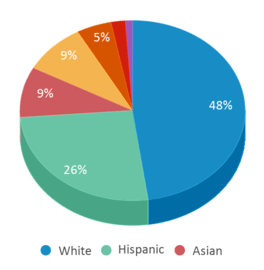

Eligible for Free Lunch
28%
50%
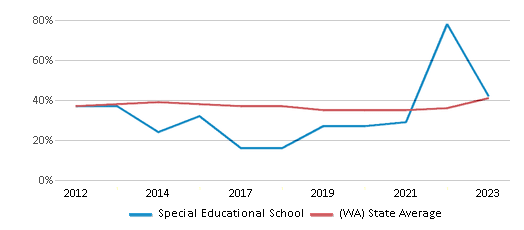
Eligible for Reduced Lunch (21-22)
15%
7%
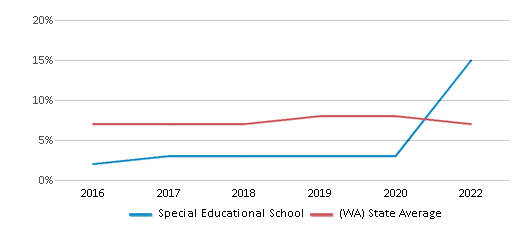
School Statewide Testing
School District Name
Source: National Center for Education Statistics (NCES), WA Dept. of Education
Profile last updated:
Frequently Asked Questions
How many students attend Special Educational School?
29 students attend Special Educational School.
What is the racial composition of the student body?
38% of Special Educational School students are White, 24% of students are Hispanic, 14% of students are Black, 10% of students are Asian, 7% of students are Two or more races, 4% of students are Hawaiian, and 3% of students are American Indian.
What is the student:teacher ratio of Special Educational School?
Special Educational School has a student ration of 7:1, which is lower than the Washington state average of 16:1.
What grades does Special Educational School offer ?
Special Educational School offers enrollment in grades Prekindergarten-12
What school district is Special Educational School part of?
Special Educational School is part of Auburn School District.
School Reviews
Review Special Educational School. Reviews should be a few sentences in length. Please include any comments on:
- Quality of academic programs, teachers, and facilities
- Availability of music, art, sports and other extracurricular activities
Recent Articles

10 Major Challenges Facing Public Schools
An in-depth examination of the critical challenges confronting America's public education system, exploring issues ranging from classroom overcrowding to student poverty, and highlighting the urgent need for comprehensive solutions.
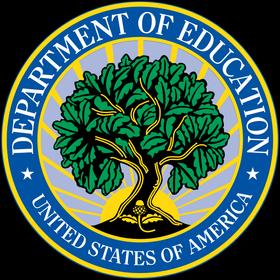
Understanding the U.S. Department of Education: Structure, Impact, and Evolution
We explore how the Department of Education shapes American education, from its cabinet-level leadership to its impact on millions of students, written for general audiences seeking clarity on this vital institution.

December 16, 2024
Personalized Learning: Revolutionizing Education for the 21st CenturyExplore the revolutionary approach of Personalized Learning in K-12 education. This article discusses the benefits, challenges, and potential of tailoring education to individual student needs, incorporating technology and adaptive learning methods to prepare students for the 21st century.





